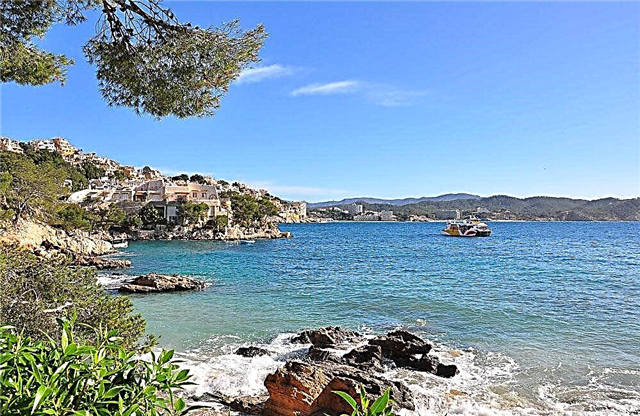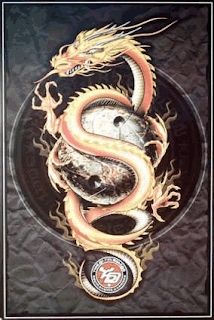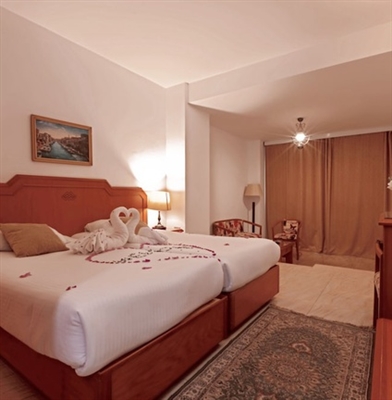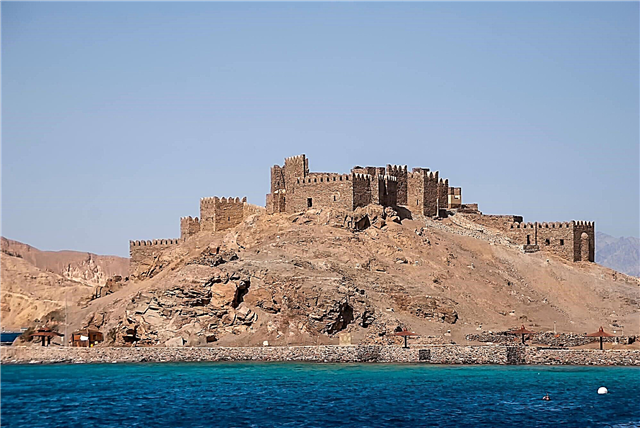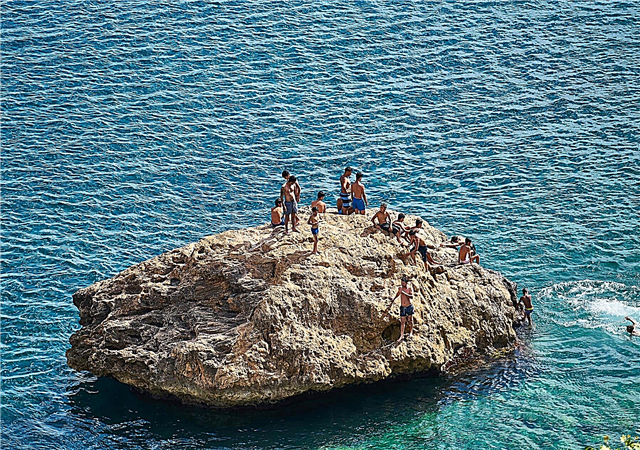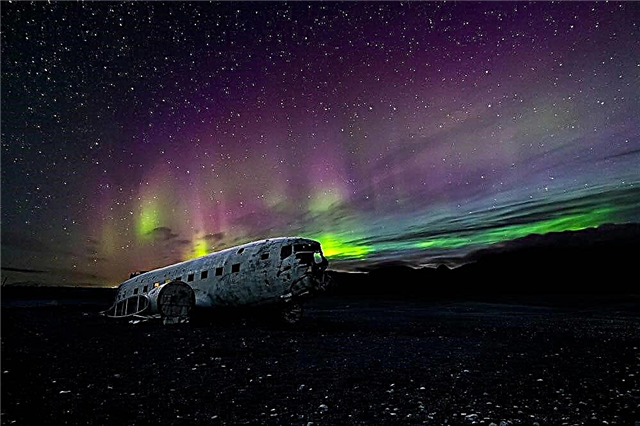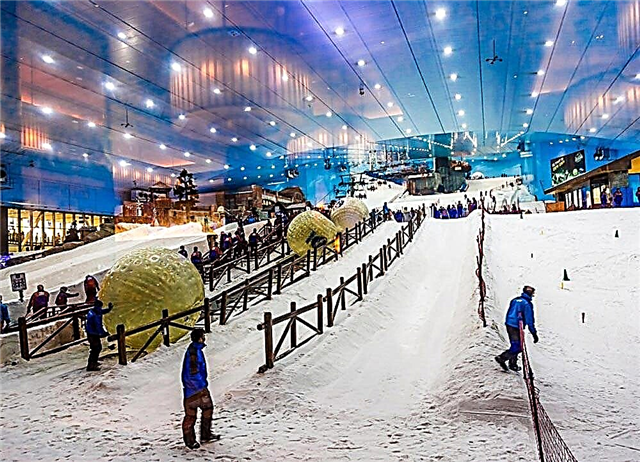Having become the capital of the Vladimir-Suzdal principality in the middle of the 12th century, Vladimir began to rise above other cities of North-Eastern Russia. Around the same time, the Assumption Cathedral was founded. Nearby, the Dmitrievsky Cathedral was erected, which still amazes residents and guests of the city with its bizarre stone carvings. These magnificent examples of ancient Russian architecture have become objects of cultural heritage of world significance.
Almost from the moment the city was founded, the Dormition Knyaginin and the Nativity of the Mother of God monasteries were built there. The development of Orthodoxy was also facilitated by the fact that for several decades there was a metropolitan see in Vladimir. Modern Vladimir is a city that boasts unique antiquities and Orthodox shrines. Thousands of pilgrims and tourists from all over the world come to see them. New churches are also being built in the city, for example, the Armenian Church of St. Gregory or the house church at the Vladimir State University.
Working churches and cathedrals of Vladimir
List of the most famous and popular temples in the city.
Holy Assumption Cathedral
The white-stone cathedral was built on the banks of the Klyazma in 1160. The main shrine of the temple was the Vladimir Icon of the Mother of God. The cathedral has gone through periods of prosperity and desolation. After the 1917 revolution, it housed a museum of scientific atheism. Since 1944, services have resumed. The cathedral is famous for its unique frescoes made by St. Andrey Rublev. It is a monument of federal significance and a UNESCO World Heritage Site.
Address: Vladimir, st. Bolshaya Moskovskaya, 56
Site: sobor33.ru

Dmitrievsky Cathedral
The temple in honor of the great martyr Dmitry of Thessaloniki was built at the end of the 12th century under Vsevolod the Big Nest. The facade of the temple is decorated with more than a thousand carved stones, most of them are based on biblical subjects. Among the stone figures, you can also see horsemen, mythical animals and even the Russian princes Boris and Gleb. Inside the temple there is a museum exposition, the most valuable exhibits are preserved fragments of frescoes of the 12th century and a particle of St. Dmitry.
Address: Bolshaya Moskovskaya, 60

Nikitskaya church
The three-story white and green church is located near the Golden Gate, albeit away from the main tourist routes. Built in the provincial baroque style in the second half of the 18th century. The main decoration of the temple is the magnificent iconostasis and the carved Royal Doors. During the Soviet years, the temple was closed; since the 1970s, a restoration workshop has been located there. Divine services in the temple resumed in 2015. An observation deck is open on the high bell tower of the temple, from which wonderful views of the city open.
Address: Knyagininskaya, 8
Site: sv-nikita.ru

Temple of St. George the Victorious
The white stone St. George Church was built in 1157. Under him there was a nunnery, which is mentioned in the chronicles of the 16th and 17th centuries. After a fire in 1778, the temple was rebuilt from the same stone. In the 30s of the XX century, the church was closed and converted into an oil and fat workshop and a smokehouse, after which a centimeter layer of oily soot remained on the ancient frescoes. At present, the temple has been returned to the Church, and divine services are being held. In the evening, the church is beautifully illuminated.
Address: Georgievskaya, 2 A
Site: stgeorgy.ru

Spasskaya and Nikolskaya churches
A picturesque ensemble of two churches is located on Spasskaya Street, named after one of the churches that adorned the prince's courtyard. The elegant St. Nicholas Church was built only a few centuries after the Spasskaya Church. In 2014, an observation deck was landscaped around the temples, from which the pedestrian zone of the old city begins. A wonderful view of the Holy Dormition Cathedral and the opposite bank of the Klyazma opens from here.
Address: Spasskaya, 8

Trinity Church
An incredibly beautiful red brick church was built in the very center of Vladimir at the beginning of the 20th century. The construction was timed to coincide with the 300th anniversary of the Romanov dynasty. A church in the neo-Russian style was erected for the Old Believer community at its expense. Unfortunately, the old icons, books and luxurious utensils of the "Red Church" have not survived. But you can enjoy its excellent acoustics, because choral groups often perform here. Also inside there is an exposition of crystal, lacquer miniatures and embroidery.
Address: Dvoryanskaya, 2

Cathedral of the Nativity of the Virgin
The main cathedral of the Theotokos-Rozhdestvensky monastery, which survived from the moment of its foundation and the invasion of the Tatars, and fires, and a complete reconstruction was destroyed by the Bolsheviks in 1930. Despite all the efforts, it was not possible to defend the temple. On the territory of the monastery, pre-trial detention centers were placed, executions were carried out. And only in 1999 the monastery was returned to the Church, and in 2004 on the site of the former Nativity Cathedral the eponymous one-domed cathedral and a bell tower were erected.
Address: Bolshaya Moskovskaya, 68

Temple of the Kazan Icon of the Mother of God
The present Kazan Church was built near the place where the Yamskaya Kazan Church stood for several centuries. It was destroyed in the 1960s with tanks. On the site of the lost church, a memorial with the Eternal Flame was erected in memory of the Vladimir soldiers who died in the Great Patriotic War. The restored temple together with the memorial form a single complex. The architects tried to give the new temple of the Kazan Icon of the Mother of God the features of the temples of the pre-Mongol era.
Address: Tchaikovsky, 1 A
Site: kazanskaya33.cerkov.ru

Nikolo-Galeiskaya church
The history of the church dates back to 1735. It was built at the expense of the Vladimir landowner I. G. Pavlygin. The Galeiskaya church was named because on the opposite bank of the Klyazma there was previously a pier for rowing ships called "galei". The name “Church of St. Nicholas the Wet” has taken root among the people. Inside, the temple is spacious and light, and on its walls, 19th century murals have been preserved. The slender and graceful church is located away from the main tourist routes and is definitely worth a visit.
Address: Nikolo-Galeiskaya, 26

Assumption Cathedral
The first mention of the Dormition Princess Monastery is found in the Laurentian Chronicle - the construction of the monastery and its main Dormition Church dates back to 1200. The ancient cathedral has survived to this day, but in a greatly changed form. Chronicles testify that in 1512 the cathedral was rebuilt. The frescoes of the middle of the 17th century, made by masters from Moscow under the direction of M. Matveyev, are of great value. For a long time, the icon of the Bogolyubskaya Mother of God of the 12th century was kept in the Assumption Cathedral, but at present it is under restoration, you can see only its list.
Address: Vladimir, Knyaginin Monastery, 37 A

Holy Trinity Church
The bright blue domes of the Holy Trinity Church (also called the Life-Giving Trinity Church) are clearly visible from one of the central streets of the city. The current church was erected in 1740 on the site of two burned down wooden temples. Among the icons, the Tolga icon of the Mother of God and the icon of St. Sergius of Radonezh and Alexei, the man of God. During the Soviet years, the temple was closed, its interior has not been preserved, but beautiful brick turrets of the fence and the bell tower have survived. Currently, the temple is functioning.
Address: Museum, 8

Temple of the Archangel Michael
An unusual red brick temple for Vladimir was built in 1893 with donations from the retired captain F. Arkhangelsky. This is probably why the temple was consecrated in honor of the Archangel Michael. Elements of different styles are mixed in the architecture of the church, but there is a clear influence of Byzantium. In the 90s, the church was restored, the destroyed bell tower was restored and returned to the believers.The iconostasis of the Archangel Michael Church is made of oak, and its dome is crowned with a crystal cross.
Address: Studennaya Gora, 1 A

Church in honor of the Resurrection of Christ and the Church of Gabriel the Archangel
A small one-domed church in the name of the Archangel Gabriel was built in 2010 as a baptismal church at the main Resurrection Church, the construction of which was completed two years later. A particle of the relics of St. Athanasius (Sakharov) is placed in the foundation stone of the Church of the Resurrection of Christ. Both temples form a single complex located among the pine trees in the Zaklyazmensky district of the city. The Big Resurrection Church is built of red brick, decorated with golden domes and is in perfect harmony with the neat baptismal church in white.
Address: Vladimir, Sudogodskoe highway, 23

Old Believer Church of the Assumption of the Virgin
The Assumption Church of the Mother of God is an architectural monument of the 17th century. It was erected on the site of a wooden church belonging to the ancient Dormition Monastery of the 12th century. The main attraction of the temple was the bell with the names of benefactors, cast in 1650. In the late 1920s, the bell was destroyed. After the re-consecration of the temple in 1995, it was handed over to the Old Believers. Restoration work is still going on. Wax candlesticks from the Church of the Mother of God are kept in the Vladimir Historical Museum.
Address: Bolshaya Moskovskaya, 106 A
Site: vk.com/club17746702

Temple of the Lord's Ascension
In the historical part of the city on the high bank of the Klyazma there is one of the oldest churches of Vladimir - Voznesenskaya. Information about it has been preserved since the 17th century, and a monastery in these places has existed since the 12th century. The current church with a bell tower was built in the 18th century and has survived to this day. The icons were painted in the Italian style in 1812. Prince D. Golitsyn is buried in the church cemetery. It is believed that it was he who became the prototype of A. Bolkonsky in the novel "War and Peace". Since 1990, divine services have been resumed in the church.
Address: Vladimir, st., Voznesenskaya, 12 V

Temple of the Meeting of the Vladimir Icon of the Mother of God
A stone church with a bell tower, built in 1807 on the site of the wooden Sretenskaya church, moved here at the request of residents from the bank of the Klyazma, has survived to this day. A memorial pillar chapel was erected in the same place. Before the revolution, there were 4 bells on the bell tower of the Sretensky Church. During the persecution of the Church, parishioners twice saved the church from closing. The third time it failed. The temple started working again in 1992, great efforts were made by its abbot, Fr. Markell, whose grave is in the church fence.
Address: Lomonosov, 17 A
Site: vk.com/club90704549

Nicholas Kremlin Church
The temple in the name of Nicholas the Wonderworker was built in the very center of Vladimir in 1761 on the site of a burnt down wooden church. This temple was located at the walls of the ancient Vladimir Kremlin, which is why it got its name. Its walls are decorated with ancient icons of the Savior, St. Nicholas and the Kazan Mother of God, which have been preserved in their original form. However, the city planetarium is still located in the building of the church.
Address: Bolshaya Moskovskaya, 66 A

Prince Vladimir Temple
The temple is notable for the fact that it was not closed during the Soviet years, unlike all other churches of Vladimir. For two decades of the first half of the 20th century, it was the only functioning temple in the city. Thanks to this, the interior of the late 19th century has been preserved in it, when the walls of the church were painted and the iconostasis was replaced. In addition, the Prince Vladimir Church is the only one in the city that belongs to the classicism style, as evidenced by the bell tower richly decorated with stucco molding.
Address: Bolshaya Nizhegorodskaya, 71 B

All Saints Church
The construction of a new church in the Yuryevets microdistrict was completed in 2014. After the consecration of the domes in 2010, Archbishop Evlogiy handed over to the temple the ancient Tikhvin icon of the Mother of God, painted in the 17th century, with a blessing for the early consecration of the temple. The icon became the main shrine of the new church. Further improvement of the interior decoration took place with the active participation of parishioners. In 2013, their own bells appeared on the bell tower of the temple.
Address: Ryabinovaya, 1 G

Church of St. John the Evangelist
The memory of this lost church is preserved in the name of Bogoslovsky lane. The historic name of the lane was returned in 1991. The church itself was demolished in 1933, and a four-story residential building was built in its place. The brick church in the name of John the Evangelist has stood on this site for only a century and a half (since 1775), and its wooden predecessor was first mentioned back in 1656.
Address: Bolshaya Moskovskaya, 92 A

Church of Constantine and Helena
The five-domed stone church in honor of the Equal-to-the-Apostles Tsar Constantine and his mother, Queen Helena, was built on the territory of the abolished Constantine-Heleninsky Monastery in 1885. The predominant architectural style is Baroque. A particularly revered icon of the temple was the myrrh-streaming icon of Constantine and Helena. During the Soviet period, the temple fell into complete desolation. The revival began in 1994. In honor of the 1000th anniversary of Vladimir, a bell weighing about 50 kg was erected on the belfry of the church.
Address: Vladimir, Kultury Square, 8

Church of Saints Cyril and Methodius
The construction of the house church at the Vladimir State University was completed in 2008 for the 50th anniversary of the educational institution. Through the efforts of the architects, the temple has successfully fitted into the existing ensemble of university buildings. The idea of creating the temple belongs to the Vorozheikin family, they also donated funds for the construction. Before that, in the Vladimir diocese there was not a single church dedicated to the saints Equal to the Apostles Cyril and Methodius.
Address: Belokonskoy, 5
Website: www.orthodox33.ru

Church of St. Gregory the Illuminator
The traditional Armenian church was opened to parishioners in August 2017 after 10 years of construction. Sculptors and icon painters from Russia and Armenia participated in its design. The construction of the temple became possible thanks to donations from the Armenian diaspora of Vladimir and the Vladimir region. The temple is made of pink tuff brought from Armenia. The interior is decorated with a fresco by Nicholas the Wonderworker by contemporary Vladimir masters. The temple perfectly blended into the surrounding space and became a new landmark of the city.
Address: Pogodin, 10

Church of the Holy Rosary
A pseudo-Gothic Catholic church was built at the very end of the 19th century. It became the only religious building built for the residents of Vladimir of the Catholic faith. The unique beauty saved the church from destruction during the Soviet years, however, like most Orthodox churches, it was closed. Currently, the church has been returned to the Catholic Church. It is still the only spiritual and cultural center for Catholics in the entire Vladimir region. Organ music concerts are held in the church.
Address: Gogol, 12 A
Website: www.hram-vladimir.ru

Temple of Joachim and Anna
A brick temple in the name of the holy righteous Godfather Joachim and Anna was built in the village of Lunevo in 1905, now it is one of the micro-districts of Vladimir. A particularly revered icon of the temple was the image of Nicholas the Wonderworker. The ancient temple icons have not survived, and the temple itself fell into desolation during the years of persecution of the Church. Since 2005, the temple has been open to parishioners, but there is still no wall painting, the belfry has not been completed, and the iconostasis is temporary. Funds for restoration work are collected by parishioners and caring people.
Address: Lunevskaya


